Oberlin Alumni Magazine
Winter 2012 Vol. 108 No. 1
What Works in Education: Let the Discussion Begin
From the President's Desk
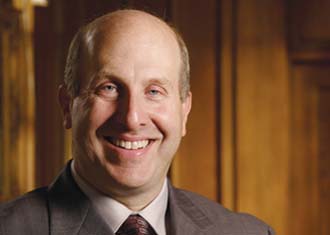 Photo: Roger Mastroianni
Photo: Roger Mastroianni
This issue of the OAM focuses attention on a topic close to the hearts of Oberlin alumni — education, particularly kindergarten through 12th grade education. Oberlin was founded to train teachers and preachers, so it is not surprising that teaching and working in education — whether in higher education, K-12, or arts and music education — tops the list of Oberlin alumni occupations. Indeed, whenever I talk with alumni about their concerns, the future of public education almost always emerges as a top priority. The essays in this issue represent a range of experiences and ideas. But they cannot begin to encompass all the wisdom and views on education held by our alumni. So editor Jeff Hagan and I invite you to join in the dialogue.
As a parent, and as a person who teaches and writes about education, I am struck by the thoughtful comments of our alumni experts. I share their concern that we nurture well-rounded, resilient young people who discover and cherish the spirit of inquiry. I, too, believe our society should reward teachers who inspire and students who succeed regardless of background.
Here in Oberlin, our commitment to education is demonstrated every day. Many of our students work in the local schools, mentoring and tutoring in subjects ranging from Spanish to math to reading and writing poetry and making their own films. Each year, many of our graduates go on to careers, and, in some cases, second careers, in teaching. Even alumni who have other occupations are often active volunteers serving on school boards, PTAs, and in tutoring and mentoring programs.
Oberlinians' commitment to educating themselves and others flows from our traditions and history, and from the work and values of the faculty, staff, and students of the college and the conservatory. I share the concern expressed by many about the divisions in our country and their effects on education. Our public schools, especially since Brown v. Board of Education, have been seen as the gateway to greater understanding and to engaged citizenship in our democracy. Oberlin's legacy inspires us to work to create those conditions even in the face of adversity. We salute all those in the Oberlin family who — in so many ways — make a difference in the lives of young people here and around the globe. For, to paraphrase the famous Talmudic saying, whoever saves a life has saved an entire world.
Marvin Krislov
President, Oberlin College
The plight of public education isn't a new concern in the United States. It isn't even new to the Oberlin Alumni Magazine, which once asked this loaded question in a headline: "Do our public schools educate?" The year was 1909.
More than a century later we asked the question, "What works in education?" to a handful of alumni experts in the field, and we limited their responses to just 350 words. What emerged were not just specific programs and big ideas, but something that transcends them: optimism. The respondents were not blind to the failures of public education, but neither were they blinded by them.
First, Drop What Doesn't Work
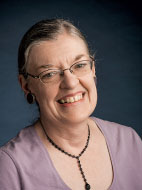
Catherine Snow '66 Professor of Education, Harvard Graduate School of Education
Answering the question, "what works in education?" in 350 words is, of course, a ridiculous task—exceeded in difficulty only by the task of summarizing with such brevity the long list of things that don't work. So the first answer to the question of what works is to get rid of all the stuff that doesn't. For starters: test preparation focused on accountability assessments; pacing guides associated with the overlong and unorganized lists of state content standards for science and social studies; and teachers lecturing students about content the students should be wrestling with on their own, rather than passively receiving.
I work with urban schools that face many challenges. Thus, in thinking about what might work, I am thinking very practically: What would work for the students, the teachers, and the organizational structures I am familiar with? The several practices I would recommend all could be classified under the superordinates "engagement" and "purpose." I would suggest, for example, that any curricular topic, from calculating the area of an oval to causes of the Revolutionary War, is more likely to be learned by students trying to answer an engaging question than by simply processing one more assignment. Starting with an authentic question (ideally an open question with at least two plausible answers) engages students, who stay engaged if they can participate in purposeful reading, discussion, and writing about the question.
Of course, elaborating on those engaging questions and giving students opportunities to discuss them, to read sources that will help them evaluate possible answers, and to write about their reactions, all take time. Thus the need to drop test preparation (ineffective anyway) and prune the lists of topics on the state content standards; otherwise teachers are forced to move through too many topics too quickly, abandoning the hope of discussion, wide-ranging research, or writing.
Is the recommendation for the discussion of deeply engaging questions based on any research or even on evidence of feasibility? Ironically, only in advanced-placement courses do students have time for deep study that integrates reading and writing—courses to which a minority of students have access. Fortunately, programs designed for underprepared urban students do exist, including Reading Apprenticeship (www.wested.org) and Word Generation (http://wg.serpmedia.org).
Find Teachers With the "It" Factor
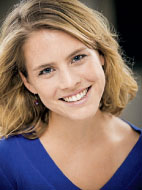
Emily Dodd '07 New York City Public Middle School Science Teacher and Member of the United Federation of Teachers
On one particularly grueling day during my first year of teaching, I planned an exciting lesson that guided my students through a proof as to whether air is matter. I envisioned a fun, hands-on experiment with students working together to gather evidence to prove their hypotheses. It ended up resembling a competitive middle school yelling match, with balloons and beakers and markers being thrown around the room. I ended the day disheartened and deflated. A kind colleague asked me to talk him through what had happened and offered practical ideas for retrying the experiment. He also told me he believed I had the teaching "it" factor — a testament, he said, to my unwillingness to give up or to blame my students for the failure of my lessons. Although I think the "it" factor varies among teachers, making it through that tough first year and going on to grow confidently into a more experienced teacher takes something special, period.
Four years later, my ability to engage, instruct, and excite my middle school scientists has developed immeasurably, and I am completely in love with my job. In my experience teaching in the Bronx and Brooklyn, the "it" factor is all about believing in and being unconditionally passionate about what you teach and about the children whom you teach. What works for the many exceptional teachers I know is being an expert in their subject areas, and also in the children they teach. Children look to teachers for so much more than information, and while teachers do communicate important content, their instruction ultimately guides students to become more curious learners, more careful and critical thinkers, more skilled communicators, and more compassionate individuals. So many teachers bear more personal and professional responsibility than most will ever give them credit for, care deeply for their students both inside and outside of their classrooms, are the hardest working individuals I know (our jobs never really start at 8 or end at 3), and are deeply committed to the students and subjects they teach.
Try Montessori Method
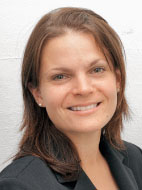
Meagan Holman '99 Member, Milwaukee Board of School Directors
The innovation that I've championed as a board member for the Milwaukee Public Schools isn't an untested fad, but simply the expansion of a method that's been thoroughly researched and shown to be effective. It boasts 100 years of implementation and 35 years of working for Milwaukee's kids: public Montessori schools. In eight locations across the city, Milwaukee has undertaken a bold experiment that showcases the best of teaching and learning in an urban, high-poverty district — the largest in Wisconsin, educating 81,000 students in 2012-13.
These schools use an educational approach, developed by Italian physician and educator Maria Montessori, characterized by mixed-age classrooms, student-led and project-based exploration of materials, and a focus on the child's learning and emotional development. The majority of Montessori schools in the U.S. are private and tuition-based, while those in Milwaukee Public Schools (MPS) are free and open to all students, educating 6,000 students every day.
Our evidence that the Montessori Method is effective is clear, ranging from controlled studies of performance among MPS Montessori graduates to the current superior testing results of the students in our public Montessori schools as compared to the district as a whole. Furthermore, the benefit of a Montessori education is seen across the socioeconomic spectrum and in areas that correlate strongly with long-term success such as creativity and executive function.
Montessori also prepares kids for rigorous, project-based learning in science, technology, engineering, and math (STEM) programs — a must for the 47 states that have adopted the Common Core standards aiming to get our kids learning and succeeding as global scholars. Montessori schools provide a perfect pathway to STEM, teaching independence, inquisitiveness, and teamwork from the start.
While seeking to scale up the number of classrooms using the Montessori Method in Milwaukee to a point that is sustainable and increases academic achievement citywide, I hope to work with leaders in our city's Montessori community to help other public school districts implement Montessori programs of their own. We need to promote and expand the Montessori Method in public schools because it works.
Value Process as much as Product
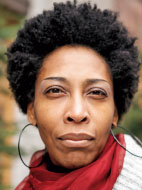
Lisa Yvette-Waller '87 High School Director, the Dalton School, New York City
The best educational experiences emphasize process along with product. A formative pedagogical approach provides teachers with extensive information about students while encouraging pupils to reflect on their learning and calibrate their approaches to assignments. Through reflective practice, young scholars gain a greater sense of their academic interests and their cognitive profiles. Authentic understanding and genuine rigor attend this approach to education, promoting engagement and allowing students to enjoy reciprocal relationships with their teachers and peers. Ultimately, process places students at the center of the educational experience while seeding agency and an orientation toward lifelong learning.
I have become increasingly committed to promoting balance in the lives of students. The equilibrium I have in mind is multifaceted and concerns both the domains across which young people work and the time devoted to academic pursuits. Students should have opportunities to complement academic course work with substantive exposure to the arts, athletics, and other activities. These undertakings are not ancillary; they encourage the creativity, problem solving, and collaboration that attend truly transformative education.
A rigorous and responsible academic program requires collaboration among faculty such that teachers have an understanding, holistically, of what is being asked of students. Where there is cooperation among teachers across disciplines, an academic program can be demanding while allowing the time for reflection and decompression that an overbearing workload cannot accommodate.
Finally, the educational experience is enhanced when compassion, open-mindedness, and integrity are esteemed along with academic excellence. A truly successful learning community cannot ignore instances of social cruelty, cultural intolerance, or academic dishonesty. When empathy, understanding, and honesty are deliberately and integrally woven into the fabric of the school, many of our greatest ideals are served; diversity is nurtured, service is cultivated, and the richest environment within which to nurture young people emerges.
Measure What Matters
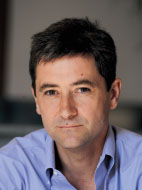
Timothy Knowles '87 Clinical Professor and John Dewey Director of the University of Chicago Urban Education Institute
A few years ago my colleagues at the Urban Education Institute tracked every student in the Chicago Public Schools from ninth grade through college. The results were shocking. Eight percent of Chicago ninth-graders earned a four-year college degree by the time they were 25. Among African American boys, the figure dropped to 3 percent. These figures were nothing short of tragic, and the Chicago Tribune crystallized the news with a banner headline.
Yet this story does not end in tragedy. Since then we have been working to change these odds. Our first step was to dig deeper and determine what really matters for high school and college graduation. One critical discovery was that the best predictor of high school graduation isn't race, income, prior test scores, or the neighborhood a student comes from. Rather, it is freshman-year course performance. It turns out that high school success is determined not by a set of immutable characteristics, but by the conditions of schooling that educators create and control.
Empowered by our findings, Chicago responded with interventions for struggling students and real-time reports detailing student-specific and schoolwide trends.
The result of these multilateral actions may prove to be one of the great success stories in urban schooling. Since 2006, the percentage of students on track to graduate has risen from 55 percent to 73 percent. More than 6,000 additional students will graduate from Chicago high schools each year. Evidence suggests these graduates will live longer, earn more in their lifetimes, vote and volunteer more often, be significantly less likely to go to prison, and have children with higher levels of educational attainment. This is not just cause for hope. It is cause for confidence.
Bringing effective practice to scale in the education sector is a complex and sometimes daunting challenge. Yet not long ago the problem of high school dropouts in Chicago seemed intractable. And while that problem is by no means solved, we have made significant progress—evidence of what is possible when parents, practitioners, researchers, and policy makers work in partnership to create reliably excellent urban schools.

Want to Respond?
Send us a letter-to-the-editor or leave a comment below. The comments section is to encourage lively discourse. Feel free to be spirited, but don't be abusive. The Oberlin Alumni Magazine reserves the right to delete posts it deems inappropriate.